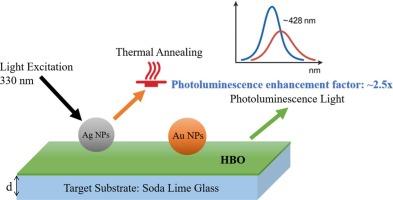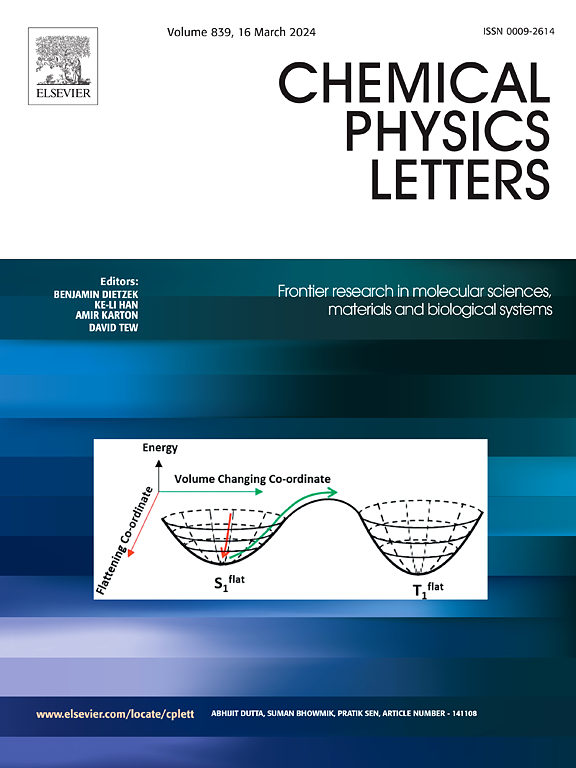利用嵌入的金属纳米颗粒热控制等离子体调制HBO光致发光
IF 3.1
3区 化学
Q3 CHEMISTRY, PHYSICAL
引用次数: 0
摘要
本研究探讨了嵌入纳米颗粒(Au, Ag)如何影响沉积在钠石灰玻璃上的有机荧光团2-(2 ' -羟基苯基)苯并恶唑(HBO)的光致发光。金属纳米颗粒通过离子注入(一种精确的干燥方法,可以控制嵌入)结合,然后进行热处理。HBO发射源于分子电子跃迁与纳米粒子等离子体场的耦合。光学吸收显示等离子体共振在424 nm (Ag)和554 nm (Au)附近,随退火而移位。经ag处理的样品的PL强度在未退火的情况下提高了2.47倍,随加热而降低。Au样品表现出较弱的增强和猝灭,寿命表明通过等离子体-荧光团相互作用的辐射衰减更快。本文章由计算机程序翻译,如有差异,请以英文原文为准。

Thermally controlled plasmonic modulation of HBO photoluminescence using embedded metal nanoparticles
This work explores how embedded nanoparticles (Au, Ag) influence the photoluminescence of 2-(2′-hydroxyphenyl) benzoxazole (HBO), an organic fluorophore, deposited on soda lime glass. Metal nanoparticles were incorporated by ion implantation, a precise dry method that enables controlled embedding, followed by thermal treatments. HBO emission originates from molecular electronic transitions coupled with nanoparticle plasmon fields. Optical absorption revealed plasmonic resonances near 424 nm (Ag) and 554 nm (Au), shifting with annealing. PL intensity for Ag-treated samples reached 2.47-fold enhancement without annealing, decreasing with heat. Au samples showed weaker enhancement and quenching, with lifetimes indicating faster radiative decay through plasmon-fluorophore interactions.
求助全文
通过发布文献求助,成功后即可免费获取论文全文。
去求助
来源期刊

Chemical Physics Letters
化学-物理:原子、分子和化学物理
CiteScore
5.70
自引率
3.60%
发文量
798
审稿时长
33 days
期刊介绍:
Chemical Physics Letters has an open access mirror journal, Chemical Physics Letters: X, sharing the same aims and scope, editorial team, submission system and rigorous peer review.
Chemical Physics Letters publishes brief reports on molecules, interfaces, condensed phases, nanomaterials and nanostructures, polymers, biomolecular systems, and energy conversion and storage.
Criteria for publication are quality, urgency and impact. Further, experimental results reported in the journal have direct relevance for theory, and theoretical developments or non-routine computations relate directly to experiment. Manuscripts must satisfy these criteria and should not be minor extensions of previous work.
 求助内容:
求助内容: 应助结果提醒方式:
应助结果提醒方式:


